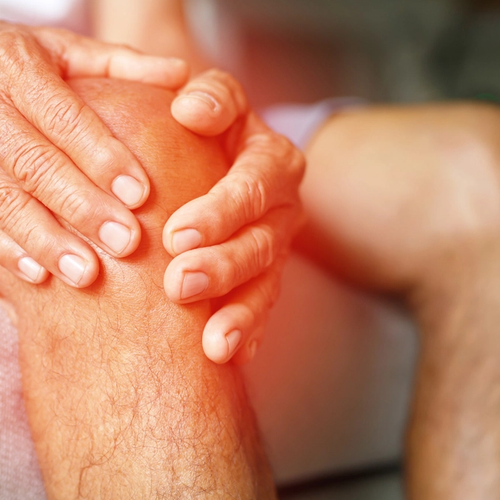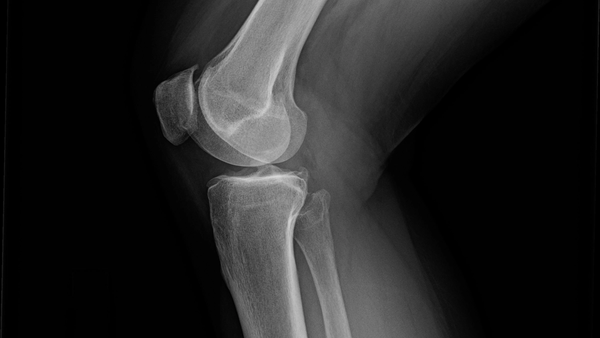Knee osteoarthritis
Knee osteoarthritis affects the joint structure in the knee and develops gradually over a long period. Risk factors include age, genetic factors, obesity, previous injuries, and unusually large loads. Knee osteoarthritis is one of the most prevalent musculoskeletal disorders that lead to reduced quality of life and disability.
At Dr. Dropin, we have skilled practitioners who can assess your elbow pain and help you receive the appropriate treatment.
See availability
What are you looking for?
Symptoms of knee osteoarthritis
If you suffer from knee osteoarthritis, you may experience the following symptoms:
- Pain in the knee, especially during movement
- Stiffness and difficulty bending or fully extending the knee
- Increasing pain during weight-bearing activities
- Possible swelling and crunching sounds during movement
Knee osteoarthritis develops gradually, and symptoms can vary. It is important to seek professional help for a proper diagnosis and treatment when experiencing these symptoms.

Treatment and prognosis
The treatment of knee osteoarthritis often involves various approaches to achieve specific treatment goals. Here are some common treatment methods:
- Pain relief: Manual techniques such as joint mobilization, massage, and trigger point therapy can help reduce knee pain.
- Increased flexibility: Specific stretching exercises and techniques can contribute to improving knee mobility.
- Strength training: Gradual introduction of strength exercises for the muscles around the knee can help reduce strain.
- Biomechanical evaluation: Analysis of walking patterns and potential adjustment of footwear or insoles to reduce the load on the knee.
- Functional rehabilitation: Gradually resume activities such as walking and running, with a focus on restoring optimal knee function.
The treatment for knee osteoarthritis should be tailored to individual needs and may vary from person to person. A close collaboration with a physiotherapist or chiropractor is crucial for developing an effective treatment plan.
See availabilityWhen should you book an appointment?
If you recognize the symptoms above and are experiencing any of the following issues, we recommend seeking professional guidance:
- Pain or reduced mobility that has persisted for more than a week without improvement.
- Severe symptoms that you need assistance in reducing quickly.
- Symptoms that cause you concern or that you believe may be due to more serious conditions.
Remember that early assistance from a therapist can reduce the duration of your issues and contribute to achieving the best possible outcome. You should never worry that your problems are "too small" - we take all types of issues seriously.
See availability
Find clinic and therapist

Find therapist
Find a therapist that suits you and your needs by filtering on one or more criteria.

Telephone
Authorized healthcare personnel assist you over the phone. We answer the phone within 60 seconds. Free of charge.
Use your health insurance
We cooperate with all the major insurance companies, so that you can use your health insurance with us if you have knee pain or other problems.
Read more about how to use your health insurance here
What can you do by yourself?
Although treatment for golfer's elbow typically involves professional guidance and therapy, there are several measures you can take to alleviate symptoms and improve your condition:
- Follow recommended exercises: If you have been prescribed home exercises by your therapist, it's important to perform them regularly.
- Continue to be active: Do not completely stop excercising or working. As long as you can stay active without big increases in pain, this is usually recommended.
- Pain relief: Pain can sometimes be reduced by using an ice pack, heating pad, a warm shower, or by performing gentle movements.
- Medications: Use over-the-counter pain relievers as directed by healthcare professionals.
- Adjust activities: Avoid activities that lead to prolonged worsening of the foot pain (more than 12 hours).
- Maintain good communication with your therapist: So that the treatment plan can be adjusted to any changes you experience.
If you have not yet had the condition examined or have deviated from the treatment plan, it is recommended to contact healthcare professionals for further guidance.
See availabilityFrequently asked questions about knee osteoarthritis
What factors contribute to the development of knee osteoarthritis?
Aging, genetic factors, obesity, injuries, and prolonged overloading can contribute to the development of knee osteoarthritis.
What factors contribute to the development of knee osteoarthritis?
Aging, genetic factors, obesity, injuries, and prolonged overloading can contribute to the development of knee osteoarthritis.
Is knee osteoarthritis hereditary?
Genetics may play a role, but other factors such as age, activity level, and injuries also influence the risk of developing knee osteoarthritis.
Is knee osteoarthritis hereditary?
Genetics may play a role, but other factors such as age, activity level, and injuries also influence the risk of developing knee osteoarthritis.
Can exercise help alleviate symptoms of knee osteoarthritis?
Yes, regular, low-impact exercise can strengthen the muscles around the knee, improve flexibility, and reduce pain associated with knee osteoarthritis.
Can exercise help alleviate symptoms of knee osteoarthritis?
Yes, regular, low-impact exercise can strengthen the muscles around the knee, improve flexibility, and reduce pain associated with knee osteoarthritis.
What are some potential medical treatments for knee osteoarthritis?
Medical treatment may include pain relievers, anti-inflammatory medications, and certain injections. In more severe cases, surgical interventions like arthroscopy or knee replacement may be considered.
What are some potential medical treatments for knee osteoarthritis?
Medical treatment may include pain relievers, anti-inflammatory medications, and certain injections. In more severe cases, surgical interventions like arthroscopy or knee replacement may be considered.